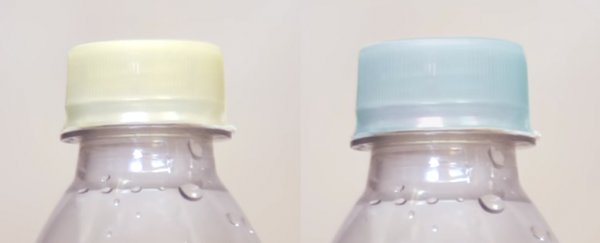Even in 2017, we often decide whether the salmon in the back of our refrigerator is still edible by giving it a sniff and looking at the 'sell-by' date. A company called Braskem wants to bring a little more science into the decision.
It has developed a way to make plastic food or beverage containers change from one colour to another when they react to the changing pH levels of their contents, a sign that certain products may be spoiling.
Even though this type of technology has existed in some form for decades, Braskem has certain advantages.
The US$7 billion plastics-and-chemical company is the largest producer in the Americas of materials that are moulded into bottle caps, jugs, reusable containers, cosmetic packaging and much more. It has production plants in Brazil, the United States, Mexico and Germany.
"Braskem has got the advantages of scale and they are well known in this particular sector for a good quality product," said Andrew Manly, communications director for the Active and Intelligent Packaging Industry Association.
The idea for this technology originated in Brazil, which has had its share of food safety scandals, including allegations in March that employees at some food companies bribed government inspectors to allow rotten and salmonella-contaminated meat to be sold.
"In the country we've seen food that was contaminated, or the package was violated and food contaminated in the production or transportation process, or in the supermarket," said Patrick Teyssonneyre, Braskem's director of technology and innovation.
 The Washington Post
The Washington Post
Braskem's pitch for the technology comes as many consumers continue to be confused about what 'sell by' dates are supposed to mean, and typically decide on whether to throw out food by relying on what they see and smell - an imprecise practice that could lead to food poisoning or good food being discarded prematurely.
In the United States, Americans throw away US$218 billion worth of food each year, according to the NRDC. The anti-food-waste coalition ReFED estimates that standardised date labels could help save nearly US$2 billion.
Bringing a new detection system to market will likely require Braskem to win over not just consumers but cost-conscious retailers, according to Claire Koelsch Sand, president of the consultancy Packaging Technology and Research and an adjunct professor at Michigan State University.
While food manufacturers drove a lot of change in the 1970s, retailers now serve as important gatekeepers. Walmart, for instance, drove adoption of RFID tags for tracking goods and Amazon has been pushing for better packaging.
"If this company really wanted to succeed, they would need to partner with not only a food manufacturer, but a retailer," Koelsch Sand said.
Meghan Stasz, senior director, sustainability at the Grocery Manufacturers Association, said a key challenge is likely to be cost.
"Even if you are looking at a penny additional for your packaging, when you multiply that over a million pieces of packaging it gets cost prohibitive pretty quickly," Stasz said.
Braskem executives contend that costs should come down as the technology gains wide acceptance.
"There are plenty of opportunities when scaling up this technology to reduce the cost. We believe that we could provide to the market a very cost competitive solution, especially when comparing to the benefits that it will bring to the consumers," Teyssonneyre said.
Still, the value must be evident, experts say.
"If it's just one of those situations where the technology is no better than what the consumer already has, which is their own nose and their own sight, then [companies] are going to be reluctant to add cost to the system," said Bob Whitaker, chief science and technology officer for the Produce Marketing Association.
One way to get retailers on board would be to persuade them of the benefits not only of more transparency around food expiration, but also the way the technology could help catch food fraud, such as added filler ingredients in pet food, and increase food safety.
"If we can get a retailer to see it from a more holistic point of view, as opposed to just this is an added cost to my packaging, we might be getting somewhere," said Manly, from the intelligent packaging industry.
The Brazil-based company began developing the technology in 2013 and creating a prototype in 2015. The company still needs to do extensive testing to ensure its technology accurately detects spoilage and does not produce false positives.
It would also need to figure out which indicators beyond pH changes will matter to producers and retailers, and ensure consumers understand the limits of the technology's assurances.
"That's a huge risk, to say something is okay, and then it won't be," Koelsch Sand said.
Still, Braskem hopes it can find a partner and begin delivering the containers to store shelves in two to three years.
2017 © The Washington Post
This article was originally published by The Washington Post.
